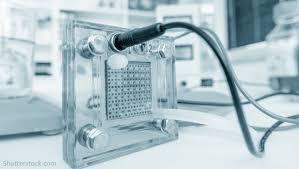Objective
The IMMORTAL project has pioneered the development of high-performance, long-lasting membrane electrode assemblies (MEAs) for heavy-duty trucks, with ambitious targets of achieving a 30,000-hour operational lifespan and a power output of 1.2 W/cm² at 0.675 V. By enhancing the materials and design of MEAs to withstand the demanding conditions of heavy-duty use, the project aims to reduce performance degradation, cut costs, and drive fuel cell technology adoption in commercial transport and beyond. Key advancements are validated through accelerated testing and predictive algorithms, underscoring IMMORTAL’s commitment to advancing robust fuel cell solutions.
The IMMORTAL project’s success is strengthened by the involvement of key industrial players, ensuring that its advancements are not only innovative but also ready for real-world application. Major companies such as Bosch, Johnson Matthey, and IVECO have been instrumental in bridging research with industry needs, reinforcing the project's relevance to the commercial fuel cell market. By integrating cutting-edge developments into their own activities, these industry leaders stand to benefit from enhanced durability, cost efficiency, and performance in fuel cell technology. IMMORTAL’s outcomes will also contribute to future hydrogen initiatives, helping accelerate the adoption of zero-emission heavy-duty transport and strengthening Europe’s position in the hydrogen economy.
Key Project Goals
- Enhanced Cell Voltage
Increase cell voltage by 25 mV at 1.8 A/cm² compared to previous benchmarks, requiring more than double the catalyst activity. - Greater Durability
Develop new materials and design solutions to mitigate degradation, significantly extending MEA lifespan. - Reduced Platinum (Pt) Loading
Achieve a lower Pt loading target of 0.36 mg Pt/cm², down from 0.45 mg Pt/cm², to improve resource efficiency and cost-effectiveness.
Key Performance Indicators (KPIs) and Achievements
- Higher Cell Voltage:
Developed Gen2 MEAs reached the 2024 SRIA target with a power density of 1.2 W/cm² at 0.65 V. - Lower Platinum Loading:
Reduced Pt loading to 0.31 g Pt/kW, a breakthrough in lowering costs and enhancing sustainability. - Improved Durability:
Validated a lifetime prediction model, forecasting only a 10% power loss over 30,000 hours, supported by 1,500 hours of rigorous load profile testing.
Results
The Strategic Research and Innovation Agenda (SRIA) 2024 performance target for HDV was reached (target at 0.65 V) and IMMORTAL came within 8% of the Annual Work Programme, IMMORTAL and SRIA 2030 high TRL targets (targets at 0.675 V) with MEAs achieving (lifetime prediction) the required 30,000 hours of operation. Higher performing, but less stable, MEAs, came within 5% of the AWP, IMMORTAL and SRIA 2030 high TRL performance target, while still reaching, in addition, the low Pt loading target (0.31 g Pt/kW at 0.675.
Conclusion
The IMMORTAL project has made substantial strides in creating durable, high-performing MEAs for heavy-duty fuel cell vehicles while significantly reducing platinum use. These accomplishments pave the way for broader adoption of fuel cell technology across commercial sectors. Moving forward, IMMORTAL will explore further optimization to balance MEA performance and stability, and will refine techno-economic analyses to fully realize the cost advantages of this technology. Continued research will be essential to pushing fuel cell innovation to new heights.
For more information have a look at the project webpage: https://immortal-fuelcell.eu/



